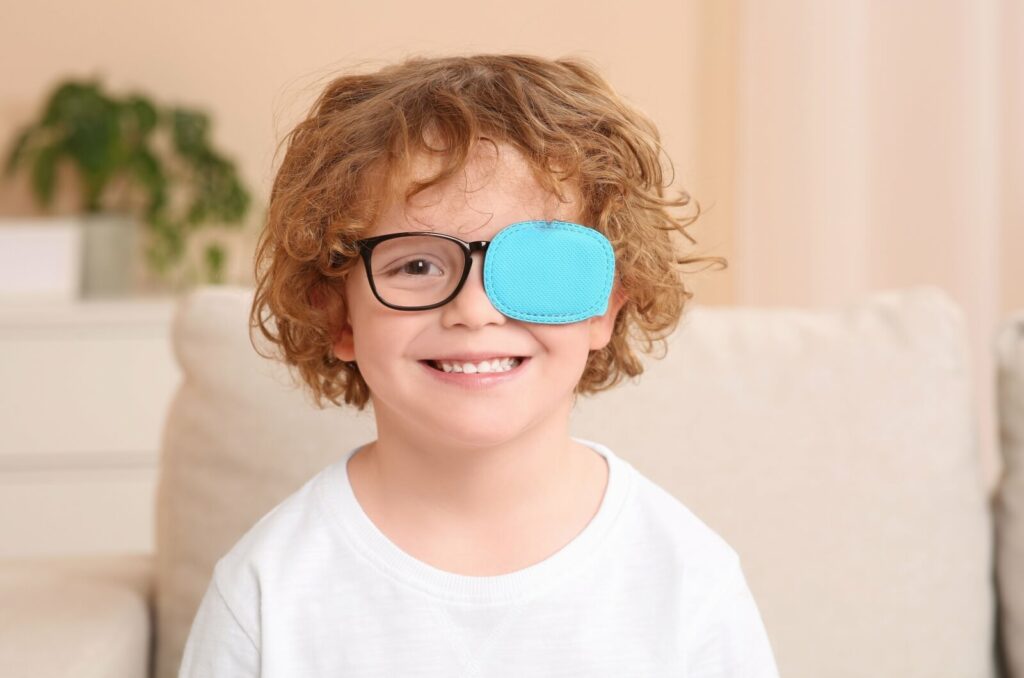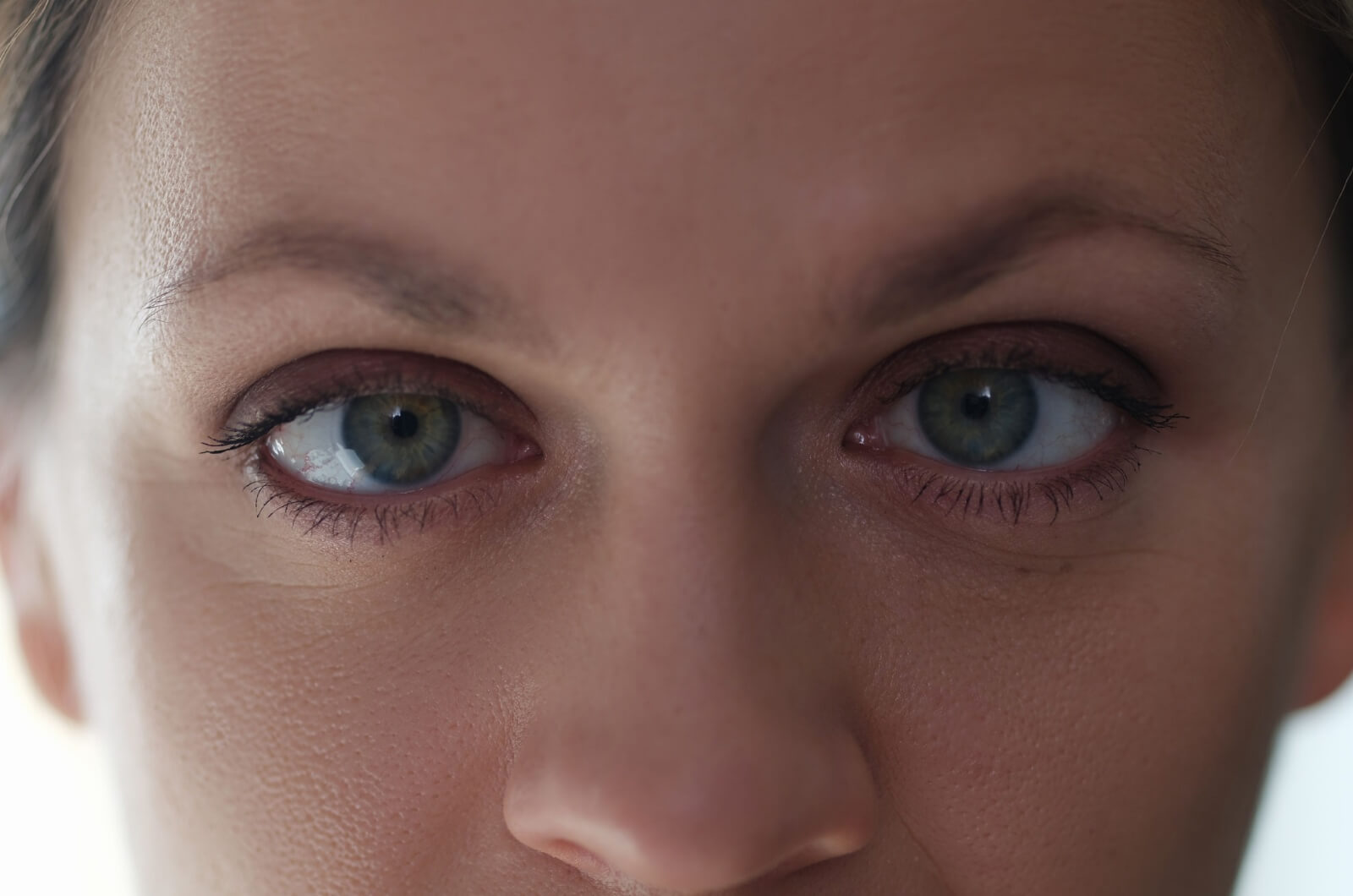Amblyopia, commonly referred to as lazy eye, is a vision development disorder where one eye doesn’t reach normal visual acuity, even with corrective lenses.
It’s generally best to treat lazy eye during childhood, when the brain’s visual development is most adaptable. However, recent advancements suggest that treatment can still be beneficial in older children and adults, though it may require more effort and time.
Having an understanding of amblyopia and its treatment is essential for maintaining optimal eye health; it all starts with an eye exam with our professional team at Vivid Eye Care.
Understanding Amblyopia: Causes & Early Signs
Amblyopia develops when the brain favors one eye over the other, due to inadequate visual development in one eye. This can occur due to several reasons, including strabismus (misaligned eyes), significant prescription differences between the two eyes (anisometropia), or vision obstruction conditions like cataracts. When the brain relies more on the stronger eye, the weaker eye’s effectiveness diminishes.
Early signs of amblyopia can be subtle, often presenting as eye misalignment, poor depth perception, or frequent bumping into objects. Children may struggle to identify distant objects or close one eye to see better. Recognizing these signs early is vital for timely intervention.
The Importance of Early Detection & Treatment
Detecting amblyopia early is key. The connections between the brain and eyes are most adaptable during childhood, making early treatment more effective. Regular eye exams are recommended for children, starting around six months of age and continuing regularly. These exams can detect amblyopia early, allowing for successful intervention.
When amblyopia is identified early, treatment is more likely to succeed. Common treatments include corrective eyewear, eye patches, or atropine drops to stimulate the weaker eye. These methods encourage the brain to process information from the affected eye, gradually improving its function.
Is it Ever Too Late to Treat Lazy Eye?
The conventional belief was that treating lazy eye effectively was limited to the age of seven or eight, after which the brain’s plasticity decreases. However, recent developments in treatment and understanding of neuroplasticity indicate that improvement is possible beyond this age, although it may require more intensive and extended interventions.
For teenagers and adults, vision therapy, which involves exercises to enhance visual processing and coordination, can offer some improvement. Additionally, corrective surgery might be an option for associated conditions like strabismus, although it primarily addresses cosmetic alignment rather than vision correction.
Potential Outcomes of Delayed Treatment
Delaying amblyopia treatment can lead to permanent vision impairment in the affected eye. The longer the condition goes untreated, the more challenging it becomes to correct, as the brain becomes accustomed to relying on the dominant eye. This can result in lifelong issues with depth perception, binocular vision, and an increased risk of vision loss if the stronger eye is compromised.
Untreated amblyopia can also affect a child’s psychosocial development, potentially impacting academic and physical performance and leading to self-esteem issues.

Modern Treatment Options & the Role of Eye Care Professionals
Thanks to modern advancements in eye care, the treatment landscape for amblyopia has broadened. Innovations in technology and methodology mean that eye care professionals are well-equipped to manage this condition effectively. Their role is important not only in diagnosing amblyopia but also in tailoring treatment plans to meet each patient’s unique needs.
In addition to traditional methods, new therapies such as computer-based vision exercises and virtual reality programs are being explored. These interactive approaches aim to engage the brain in a dynamic manner, potentially enhancing treatment effectiveness, especially for older children and adults.
Eye care professionals provide ongoing support and monitoring, adjusting treatment plans as necessary to make sure of the best outcomes. Their expertise is invaluable in guiding patients and families through the treatment process, addressing concerns, and celebrating progress.
Seeing the Future Clearly with Vivid Eye Care
While early detection and treatment of amblyopia offer the best chance for recovery, advancements in treatment mean it is never too late to seek help. Through traditional methods or modern innovations, there are options to improve vision and quality of life. The key is to be proactive and consult with eye care professionals who are committed to providing comprehensive and compassionate care. By prioritizing eye health, individuals can look forward to a future where amblyopia’s impact is minimized, ensuring clearer vision for tomorrow.
Experience exceptional eye care at Vivid Eye Care, where your vision is our priority. Our dedicated team of experienced professionals uses specific technology to provide comprehensive services for the whole family.
Whether it’s a routine eye exam or a specialized consultation, trust us to deliver personalized care tailored to your needs. Book your appointment today and discover the difference. Clearer vision is just a call or click away—schedule now and take the first step towards healthier eyes!






















